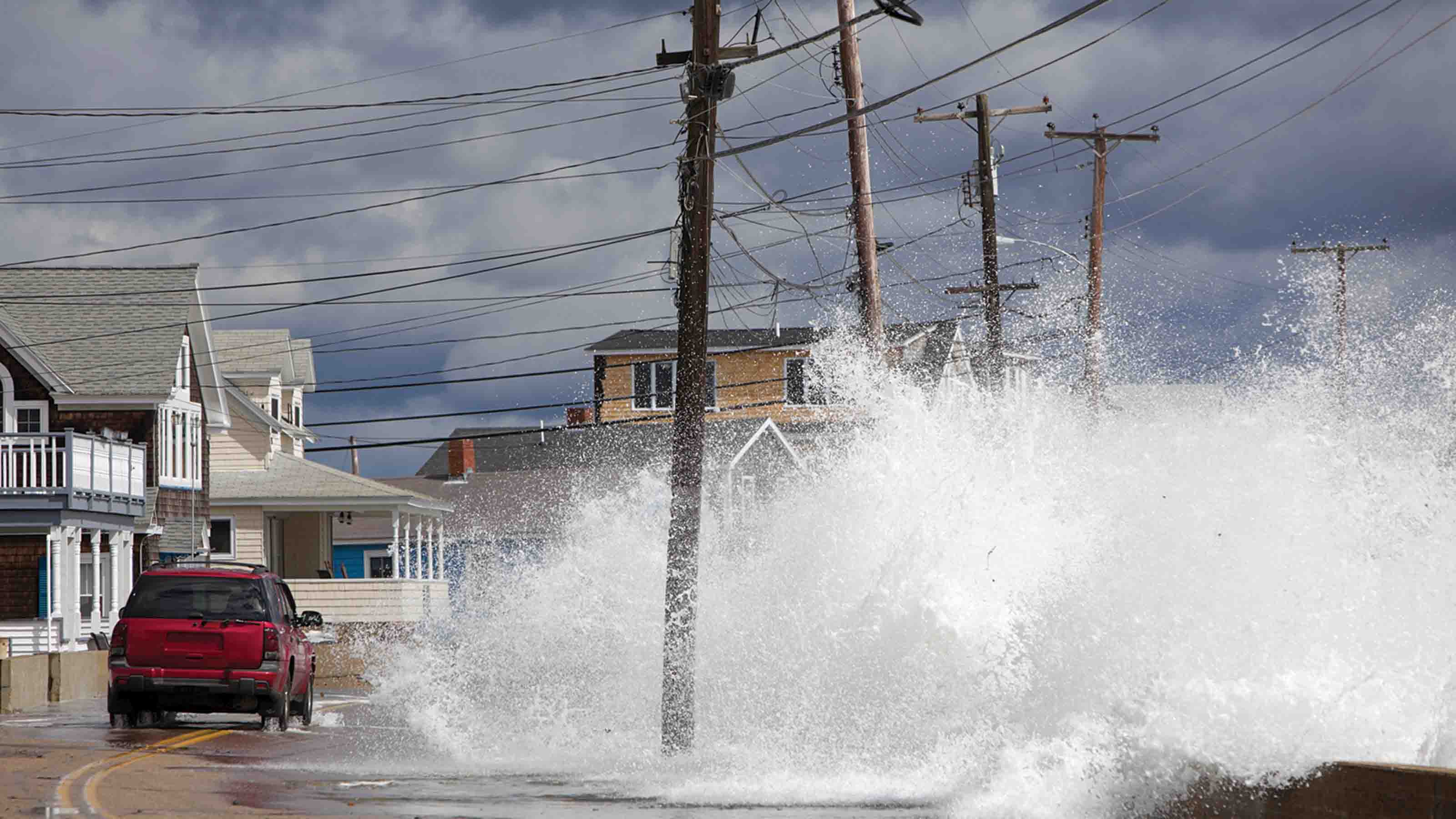Flood Insurance May Cost You More
New national rating procedures will raise premiums for more than 3.8 million policyholders.


More than 3 million homeowners who live in coastal areas will see premiums for federal flood insurance rise this year as the Federal Emergency Management Agency adjusts insurance rates to reflect the risks of climate change.
Damage from water that rises from the bottom up—such as flooding from a heavy rainfall or hurricane—isn’t covered by homeowners insurance. But your policy will likely cover damage if your water heater leaks or a water pipe inside your house bursts.
The National Flood Insurance Program is the primary provider of flood coverage, although some private insurers also provide flood insurance. The NFIP provides about $1.3 trillion in coverage for more than 5 million policyholders in 22,500 communities across the nation. The cost of an NFIP policy varies, depending on risk, but averages about $700 a year. A policy from a private insurer averages $1,050 a year, according to Policygenius, an insurance marketplace.
From just $107.88 $24.99 for Kiplinger Personal Finance
Become a smarter, better informed investor. Subscribe from just $107.88 $24.99, plus get up to 4 Special Issues

Sign up for Kiplinger’s Free Newsletters
Profit and prosper with the best of expert advice on investing, taxes, retirement, personal finance and more - straight to your e-mail.
Profit and prosper with the best of expert advice - straight to your e-mail.
NFIP recently released new flood insurance rating procedures that are designed to provide a better measure of the risk of flooding in particular areas. The new methodology, which went into effect in October, will lower premiums for about one-fourth of existing policyholders, while more than 3.8 million will see rates increase.
For most of those homeowners, the increase will be $10 or less per month, according to an analysis by ValuePenguin, a consumer website. About 4% of flood insurance policyholders will pay more than $20 extra a month. Because of the geographic factors that influence the cost of flood insurance, some states are more likely to see higher increases. More than 10,000 policies in each of Florida, Texas, Louisiana, New Jersey and New York will face the highest price increases, according to ValuePenguin.
How to buy coverage. To purchase flood insurance, call your insurance company or insurance agent. You can also find a provider at www.floodsmart.gov/flood-insurance-provider or by calling the NFIP at 877-336-2627.
The program provides up to $250,000 of dwelling coverage and up to $100,000 of contents coverage. The policy has two separate deductibles (one for dwelling, one for contents) that you must pay before coverage kicks in. Deductibles start at $1,000 but can go as high as $10,000 for single-family homes.
Homeowners who want more coverage may be able to buy private insurance, which typically has higher coverage limits. Premiums for a private policy will vary depending on where you live; in some cases, they may be lower than premiums for an NFIP policy.
Profit and prosper with the best of Kiplinger's advice on investing, taxes, retirement, personal finance and much more. Delivered daily. Enter your email in the box and click Sign Me Up.

As the "Ask Kim" columnist for Kiplinger's Personal Finance, Lankford receives hundreds of personal finance questions from readers every month. She is the author of Rescue Your Financial Life (McGraw-Hill, 2003), The Insurance Maze: How You Can Save Money on Insurance -- and Still Get the Coverage You Need (Kaplan, 2006), Kiplinger's Ask Kim for Money Smart Solutions (Kaplan, 2007) and The Kiplinger/BBB Personal Finance Guide for Military Families. She is frequently featured as a financial expert on television and radio, including NBC's Today Show, CNN, CNBC and National Public Radio.
-
 10 Cheapest Places to Live in Washington
10 Cheapest Places to Live in WashingtonProperty Tax Is Washington your go-to ski destination? These counties combine no income tax with the lowest property tax bills in the state.
-
 Healthy to 100: Secrets from Countries Where Retirees Age Best
Healthy to 100: Secrets from Countries Where Retirees Age BestLongevity is a team sport, according to author Ken Stern. Here's the secret sauce for living long, healthy lives from countries like Italy and Japan.
-
 My First $1 Million: Semiretired CPA, 68, San Francisco
My First $1 Million: Semiretired CPA, 68, San FranciscoEver wonder how someone who's made a million dollars or more did it? Kiplinger's My First $1 Million series uncovers the answers.
-
 9 Types of Insurance You Probably Don't Need
9 Types of Insurance You Probably Don't NeedFinancial Planning If you're paying for these types of insurance, you may be wasting your money. Here's what you need to know.
-
 Amazon Resale: Where Amazon Prime Returns Become Your Online Bargains
Amazon Resale: Where Amazon Prime Returns Become Your Online BargainsFeature Amazon Resale products may have some imperfections, but that often leads to wildly discounted prices.
-
 Roth IRA Contribution Limits for 2026
Roth IRA Contribution Limits for 2026Roth IRAs Roth IRAs allow you to save for retirement with after-tax dollars while you're working, and then withdraw those contributions and earnings tax-free when you retire. Here's a look at 2026 limits and income-based phaseouts.
-
 Four Tips for Renting Out Your Home on Airbnb
Four Tips for Renting Out Your Home on Airbnbreal estate Here's what you should know before listing your home on Airbnb.
-
 Five Ways to a Cheap Last-Minute Vacation
Five Ways to a Cheap Last-Minute VacationTravel It is possible to pull off a cheap last-minute vacation. Here are some tips to make it happen.
-
 How Much Life Insurance Do You Need?
How Much Life Insurance Do You Need?insurance When assessing how much life insurance you need, take a systematic approach instead of relying on rules of thumb.
-
 Is Home Insurance Required? Not Necessarily, But That Doesn't Mean You Should Drop It
Is Home Insurance Required? Not Necessarily, But That Doesn't Mean You Should Drop ItHome insurance is required by most mortgage lenders. But even if your home is paid off, does it make financial sense to drop coverage?
-
 When Does Amazon Prime Day End in October? Everything We Know, Plus the Best Deals on Samsonite, Samsung and More
When Does Amazon Prime Day End in October? Everything We Know, Plus the Best Deals on Samsonite, Samsung and MoreAmazon Prime The Amazon Prime Big Deal Days sale ends soon. Here are the key details you need to know, plus some of our favorite deals members can shop before it's over.